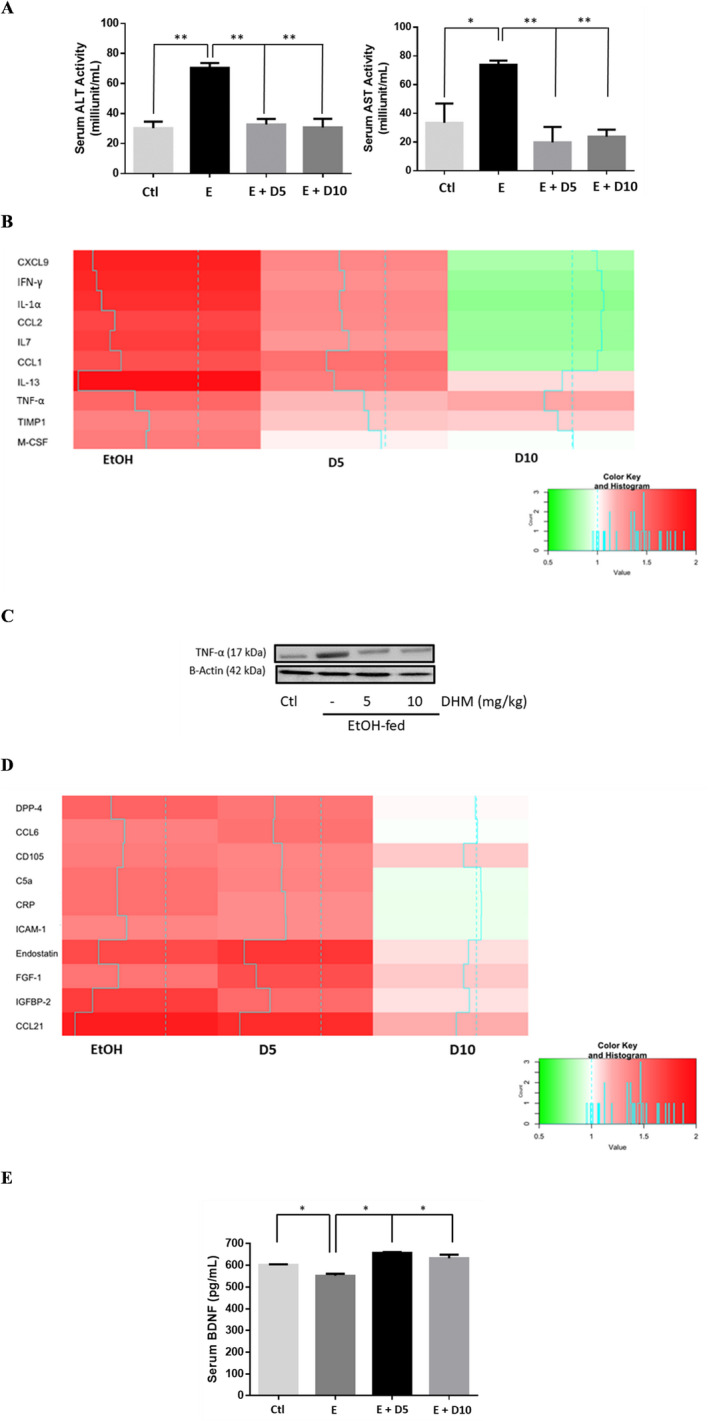Fig. 4.

DHM significantly reduces hepatic enzyme release, exhibits dose‐dependent antiinflammatory actions, and maintains serum BDNF levels. (A) DHM administration at both 5 and 10 mg/kg significantly inhibited the activities of serum ALT and AST comparable to control values (n = 6/group). (B) DHM dose‐dependently decreased serum cytokine markers compared to untreated ethanol (EtOH)‐fed mice serum (n = 4/group). (C) DHM administration, at both 5 and 10 mg/kg, significantly reduced EtOH‐mediated hepatic TNF‐α expression relative to EtOH‐only controls (n = 3/group; see Fig. S4A for ImageJ quantification of triplicates). (D) Hepatic cytokine analysis of mice chronically fed EtOH and either treated with DHM (5 or 10 mg/kg) or untreated (n = 4/group). E) DHM administration at both 5 and 10 mg/kg significantly reversed EtOH‐mediated reductions in serum BDNF concentrations (n = 6/group). Color key and histogram illustrate the intensity of red being associated with larger fold increases in expression relative to normalized control values (white), and intense greens are associated with fold decreases (0.5‐fold the lowest) relative to normalized control values. Blue solid lines indicate average fold values relative to control (dotted blue line). Data represented as mean ± SEM. *p < 0.05 compared with corresponding EtOH controls. *p < 0.05 and **p < 0.01 compared with corresponding EtOH controls. E = EtOH; D5 = 5 mg/kg DHM; D10 = 10 mg/kg DHM.
